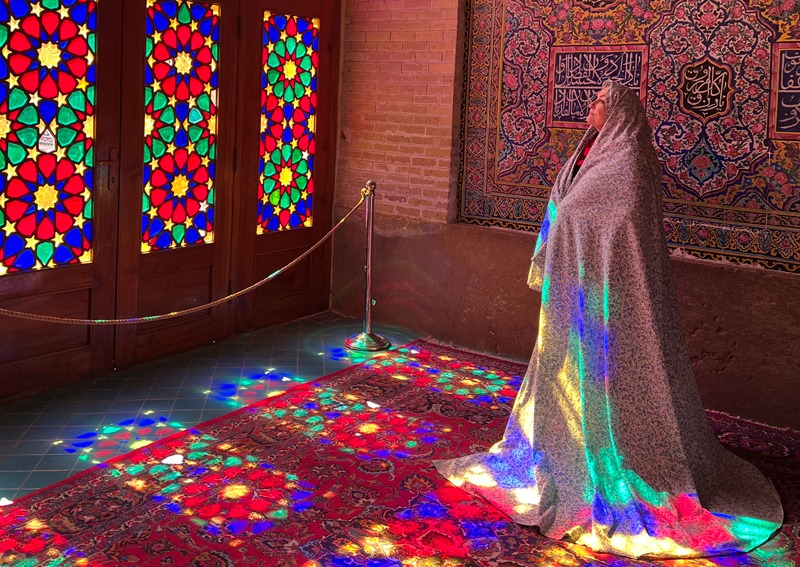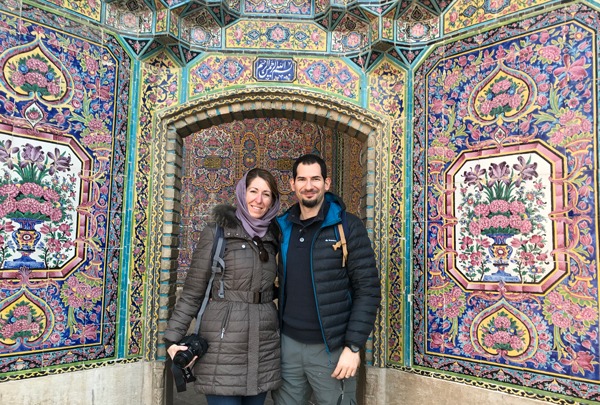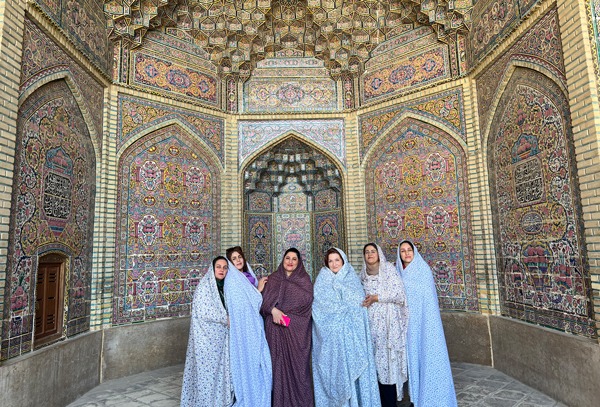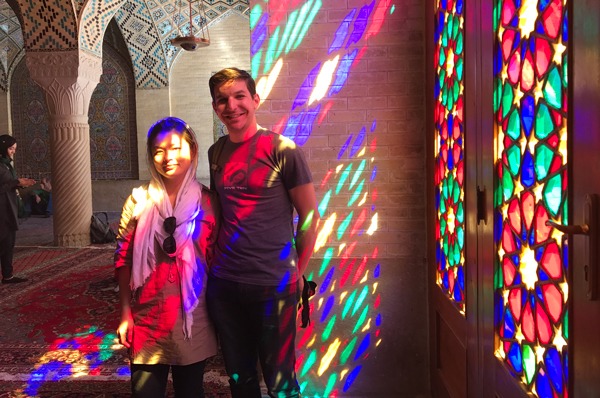
Nasir-Ol Molk Mosque
Nasir-Ol Molk Mosque, Nestled in the heart of Shiraz, a city steeped in cultural richness, you’ll find the Pink Mosque. This gem not only adds to Iran’s soulful charm but is also one of the oldest and most breathtaking mosques in Shiraz. It’s a must-see architectural marvel that paints a vivid picture of what traveling in Iran is all about. Make sure not to miss out on exploring this captivating site when you find yourself wandering through the stunning city of Shiraz.
And let’s talk about those distinctive rose-pink tiles and intricate designs! They’re not just details; they’re the kind that captures the hearts of visitors from every corner of the world.

In the late 1800s, Iran’s Qajar dynasty got intrigued by Western culture. The Qavam Family, part of the aristocracy, blended European elements into Iranian life, leaving us with beautiful art pieces that now define Shiraz’s charm. One of these gems is the Pink Mosque.
Nasir-Ol Molk, a member of the Qavam Family, commissioned the mosque’s construction. Initially, it was part of a bigger plan, including a house, bathhouse, and storehouse. Over time, as Shiraz grew, these extra bits were taken down, but the Pink Mosque remains, telling a unique story of cultural mix and enduring beauty.
The Nasir-Ol Molk Mosque may seem like a typical Islamic mosque at first. However, when the sun rises, its architectural design magically transforms the mosque into a breathtaking kaleidoscope.
Unlike typical mosques with cool colors and geometric patterns, Nasir Mosque is a delightful exception. The clever architect, also behind Eram Garden, brought warmth to his creation with floral designs in predominantly pink hues and a touch of Western art elements. The stone pillars take inspiration from Vakil Mosque, adding a unique charm to this vibrant corner of Shiraz.

At first glance, Nasir ol-Mulk appears to be an ordinary Iranian mosque, tucked away in an alley with a modest entrance and lacking towering minarets or a massive dome. However, step inside, and you’ll be greeted by a meticulously designed architectural marvel.
The courtyard features a sizable rectangular pool at its center, home to shimmering golden fish. This water body reflects both the sky above and the intricate structure surrounding it. On the northern and southern ends of the yard, two porches boast stunning half-vaults adorned with vibrant tiling and intricate Persian Muqarnas art, adding a touch of enchantment to this hidden gem.

Inside the Nasir-Ol Molk Mosque, you’ll find two prayer halls, one to the left of the pool (used in winter) and the other on the right (used in summer). The eastern room facade features eight arches, while the western hall facade is adorned with seven Orsi windows, creating a captivating play of light. This area is the highlight of the complex, where the magic of light truly comes to life.
Beyond the colorful windows, the beauty of this space extends to the ceiling, supported by twelve intricately carved stone columns. Each pair of columns is crowned with tiny domes. The row of pillars leads to a stunning altar, adding to the grandeur of this prayer room.

While Iran boasts hundreds of historical mosques, each with its charm, Nasir-Ol Molk Mosque stands out for its distinctive style and architectural finesse. Constructed over 12 years from 1876 to 1888, this magnificent mosque was commissioned by Hassan Ali Nasir-ol-Mulk, a prominent figure in the Qajar dynasty and the son of the ruler of Fars Province.
The mosque holds a special place in Iranian history as it was built during the Qajar era, a period marked by the nation’s early steps towards modernization. Influenced by Europeans who frequented the country, this era left a significant impact on Iran’s art, architecture, and culture, making Nasir al-Mulk Mosque a testament to this transformative period.
Nasir ol-Mulk Mosque beautifully marries Persian architecture with European tilework, showcasing a unique fusion of styles. The introduction of pink-colored tiles adorned with intricate floral designs, inspired by European aesthetics, is a departure from the traditional Persian geometric tilework dominated by turquoise and shades of blue.
Adding to its distinctiveness, the winter prayer hall features skillfully crafted colorful stained-glass windows with wooden frames, known as Orsi windows in Persian. Unlike the stained glass commonly found in churches or synagogues, Orsi windows are a hallmark of traditional Iranian architecture, typically seen in houses and mansions but rarely in mosques. The strategic placement of these windows allows the morning sunlight to create a mesmerizing display of colorful lights, a testament to the architect’s subtle brilliance.

For photographers seeking the magic of Nasir Ol Molk Mosque, the golden time is early morning. As sunlight dances through the stained-glass windows in the eastern prayer hall, it paints the mosque in a rainbow of colors. The play of light, reminiscent of divinity in many religions, creates a serene atmosphere, a true soul-touching experience. No wonder, these captivating moments have become social media favorites. And if you’re eyeing the northern arch, opt for the afternoon light for that perfect shot.

